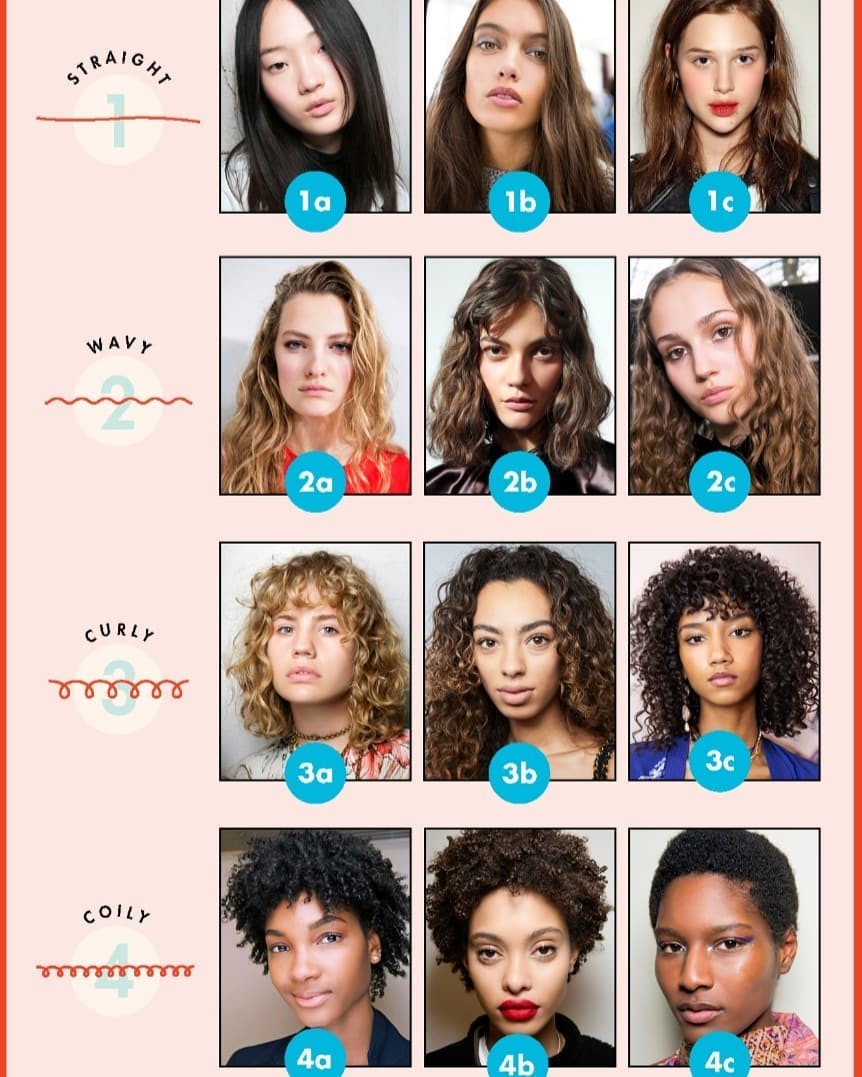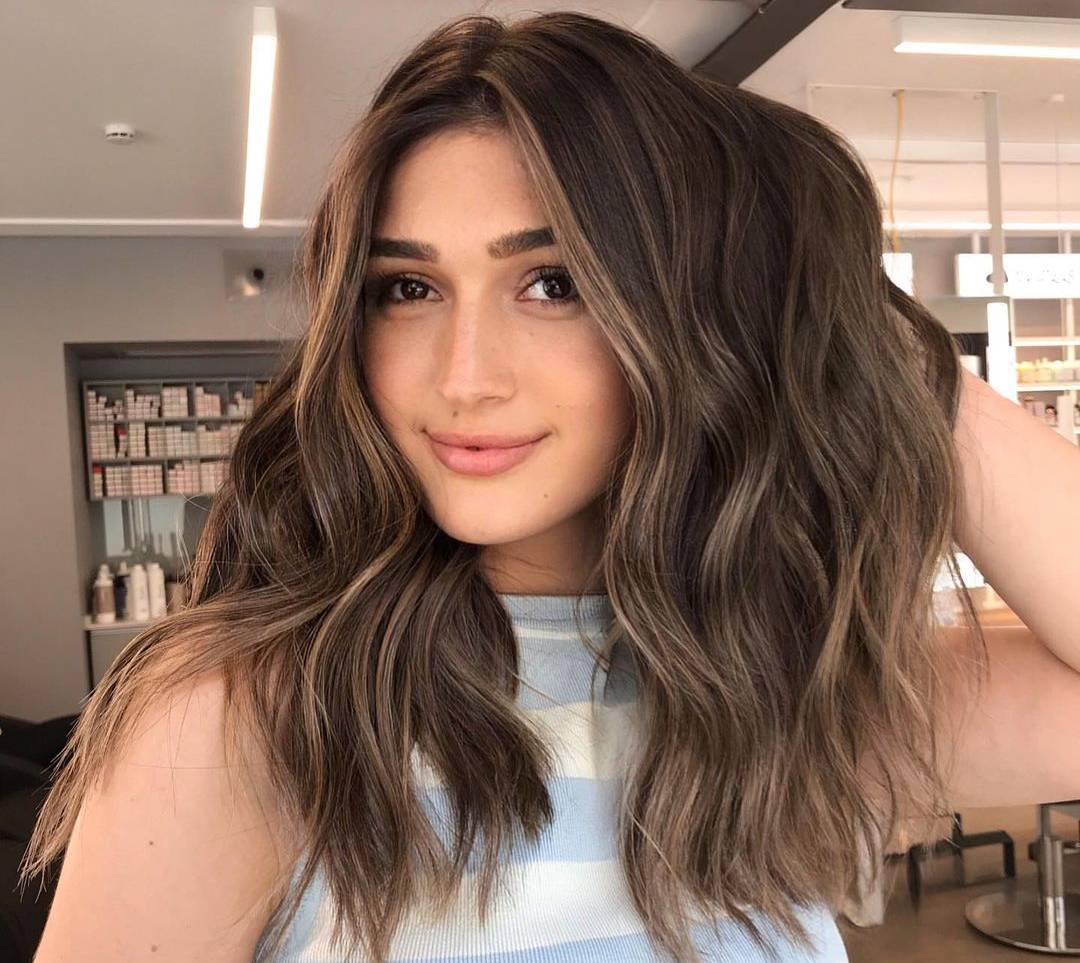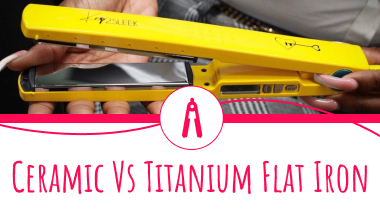How to Determine Your Hair Type?
Hair type is determined by genetic factors, so each person has his or her own characteristics of shape, color, and structure. In order to choose perfect shampoos and other cosmetic products to make your hair look and feel its best, you must first understand its individual characteristics and needs.
This guide will help you make an easy analysis of what your hair type is exactly. Then you can start using products that are most suitable for your individual hair type.
By going through which characteristics apply to you, it will be clear to understand your hair type and you will be able to start using the most suitable products and taking further actions to serve the needs of your hair.
To further stress the importance of analyzing your hair type individually, you should know that a shampoo or conditioner that is beneficial for your mother or friend, may not benefit your hair at all, or worse – it could even cause harm.
Hair Classification by Structure
Hair structure (i.e. how thick or thin it is) is determined by the size and shape of the follicles. This is due to ethnicity and genetic factors. A person with thin skin often has a thin hair type and vice versa.
A direct correlation between the thickness and natural pigmentation is also found: blondes have the finest hair, while brunettes have the thickest. The shape of hair (straight or curly) has no effect on its structure.
Thick Hair
Thick hair is very strong, it looks heavy and full. Those with thick hair often complain about how it’s difficult to tame and style their strands. that it is difficult to “subdue”. In addition to thick hair being difficult to subdue and fix as desired, it is even more challenging to curl!
And after all the effort, it returns to its natural form fairly quickly under its own weight even after being straightened. In order to dye thick hair, it requires prolonged exposure to the dye so that chemicals have time to penetrate into the structure.
But thick hair copes with dyeing, bleaching, and perms easily — its structure allows it to maintain a healthy and well-groomed appearance without becoming damaged.
Medium-thick Hair
Medium-thick hair is the most manageable and pleasant hair type to care for. This is the most common type among European women. Most haircuts suit those with medium-thick hair and after being styled it lasts for a long time.
It is flexible and easy to dye to the desired color and withstands perming and straightening well.
Fine Hair
Fine hair often disappoints its owners by the lack of volume. Even if there are a lot of follicles, it seems to be sparse because of its fineness. It is fragile and often prone to splitting and needs regular moisturizing.
Experts recommend avoiding the use of blow dryers and flat irons for this type, as these can cause the hair to become finer. This type is easy to dye, but it can severely be damaged and lose its healthy appearance under the influence of dying.
Hair Classification by Shape
To find out what shape your hair is, simply take a look in the mirror. The shape depends on the keratin structure in hair composition, as well as on the location of follicles in the skin of the head.
For example, straight hair is arranged perpendicular to the skin, wavy – already has a slight curve in its base, and curly – is S-shaped. Therefore, you cannot change the shape. You can only apply temporary measures.
- Straight hair lies down smoothly without any wrinkles. Due to its smooth surface, it perfectly reflects rays of light, shining beautifully.
- Wavy hair has a light wave; it can form a spiral curl. It’s soft to the touch and easy to style, i.e. to straighten or curl.
- Curly hair forms tight spirals. It looks full and thick. It can be difficult to tame and easily returns to its natural shape after styling.
How to Determine Your Hair Type by its Oiliness
| Normal | Oily | Dry | Combined | |
| How often do you wash your hair? | Once every two- three days. | Almost every day. | Once a week. | Once every four days. |
| State of roots | Oily by the end of day 3. | One day has passed and it’s already oily. | Dry after shampooing, normal on 3-4 day, oily on the 7th day. | The roots are oily by the end of the 2-3 day. |
| State of ends | Dryish or normal, sometimes they split. | Good condition, no splitting. | The ends are brittle, they often split. | Brittle, dry ends, they also split. |
| Shine | Healthy and shiny. | It is shiny only on the first day after shampooing. | Mostly dull. | The ends are dull and the roots have an oily sheen. |
| Electrification | Extremely rare | Almost never | Relatively often | Usually the ends |
| Volume | Medium volume. | Normal volume only on the 1 day after shampooing, then the strands begin to stick together and lose their volume. | Increased volume. | The ends come apart within a short period of time, normal volume by the roots. |
| Styling | Generally, it is easy to fix. | It is easy to fix, but the styling is not so durable. | It is difficult to fix. | Usually, it is easy to fix, but the ends mess quickly. |
The oiliness depends on the work of the sebaceous glands of the scalp. The intensity of the sebum secretion may vary throughout life, as well as under the influence of certain products such as shampoos and dyes.
In regards to determining the oiliness, the hair can be dry – an insufficient flow of sebum, normal, or oily – excessive secretion. It could also be combined.
Normal Type
The owners of normal hair type have no problems in taking care of their hair. However, the fact that the normal type looks healthy and strong does not mean that it does not need care and attention.
Here are a few characteristics of normal hair type:
- elastic;
- easy to comb;
- can be styled effortlessly;
- the ends are not inclined to splitting, sometimes there may be dryness;
- the scalp is well moisturized and is not flaky;
- the hair shines and has an attractive appearance;
- after using a proper shampoo, there is no feeling of tightness; and
- easy to recover after dyeing and other impacts.
If you have a normal type, it is enough to wash your hair 2-3 times a week. Choose shampoos and hair products for the normal type only. To maintain the health of your hair, you are periodically (no more than 1 time per week) recommended applying nourishing and moisturizing masks, whether purchased or homemade.
A decoction of chamomile has a wonderful impact on the normal hair type; (pour a glass of boiling water into 2 tbsp. of chamomile and infuse for 20 minutes). Trim your hair a little once every few months to prevent splitting of the ends.
Dry Type
Dry hair type can be a real problem for its owner. Once it is dry, the scalp is also dry: there is peeling, itching, irritation and dry dandruff. Strands are very sensitive to the impact of heated styling, dyeing, the wind, and cold. Dry hair also suffers from the wrong chosen cosmetics.
Characteristics of dry hair type include:
- dull;
- brittle and inelastic;
- easy to tangle, difficult to comb, especially after shampooing;
- difficult to fix the desired shape during styling;
- splitting of ends;
- prone to loss; and
- a strong feeling of tightness and discomfort after shampooing.
Strands may be naturally dry (due to reduced oil secretion), but they can actually become dry under the influence of negative factors or due to old age. If your hair has started to show the signs of dryness, first of all, you need to eliminate the cause to help your strands recover:
- refuse the regular use of blow dryers, flat irons, and straightening brushes, or at least use some preventive measures, if you want to have
- healthy hair without split ends;
- do not wash your hair too often;
- wash it well with fresh water after swimming in the sea or a swimming pool;
- be sure to use moisturizers;
- always use protective treatment while spending time in the sun;
- do not neglect to wear a headdress both in cold and hot weather;
- choose cosmetic products for the dry hair type only as they contain large amounts of necessary nutrients and moisturizing ingredients;
- avoid chemical perming and straightening and bleaching — these procedures are too aggressive for the dry type. Opt for heat stylers, or even better brush straightener, as the advantages of brush hair straightening is obvious;
- give up dyeing if possible, and choose gentle dyes (ammonia-free) if this is not possible;
- consume more vitamins: eat more fruits and vegetables or take vitamin complexes;
- use a wooden comb with rare teeth — metal combs can cause further damage;
- do not comb wet hair;
- apply special serum and oils to split ends after every wash;
- try to have a haircut with hot scissors in a salon — this procedure solders the ends, preventing further delamination;
- humidify the air in the room in cold weather (after all, heating devices dry the air and your hair)
- do not be lazy to apply homemade masks based on various basic ingredients and essential oils several times a week — extra nutrition
- will speed up the recovery process;
- drink plenty of pure water (the daily recommended intake is about 1.5-2L);
- do not wash your hair with chlorinated water if possible (use boiled or filtered water) — chlorine drastically dries;
- spray with thermal water throughout the day;
- if nothing helps to revitalize it, contact your doctor — the cause of dryness could be caused by internal factors.
Also Read: Best Rusk inch Flat Irons Reviewed
Oily Type
Characteristics of this hair type include:
- oily sheen the first day after shampooing;
- strands stick together;
- no splitting;
- oily dandruff and itchy scalp;
- hair looks unkempt;
- no feeling of tightness after shampooing; and
- it does not become fluffy after a blow-dry.
Oily hair type is the most problematic. Strands become oily if the sebaceous glands of the scalp produce too much secretion. You should pay attention to oily hair type as it’s not just an aesthetic component, but also possible health problems. Also, harmful bacteria that cause skin diseases and hair loss breed actively on an oily scalp.
These are the most common causes of oily hair:
- hormonal disorders;
- disorders of the endocrine system;
- nervous system problems;
- stress;
- medication;
- excessive sweating;
- unhealthy diet: eating too many fats and carbohydrates; and
- excessive combing.
To help the sebaceous glands normalize and to make your hair restore its oil balance, the following measures are necessary:
- diet adjustments: reduce the consumption of fatty, fried and spicy foods, as well as sweets. Include more fruits, vegetables, and whole grains;
- drink plenty of pure water;
- wash your hair regularly in order eliminate the chance of harmful bacteria to develop rapidly;
- use room temperature water when washing;
- use dry shampoo;
- use cosmetic products specifically for oily type — they will help to extend the feeling of freshness.
Also Read: Best 1/2 inch Flat Irons Reviewed
Combined Type
Characteristics of the combined hair type include:
- the scalp becomes oily just a couple of days after shampooing;
- split and broken hair ends;
- strands often stick together.
Combined hair type is the most difficult to take care of due to the fact it combines two opposite properties, i.e. dryness and oiliness. Most frequently, this is a problem for the owners of long hair, because the sebum is not evenly distributed throughout the entire hair length.
Often, hair shows the signs of a combined type in spring, when, after the season of warm hats, the roots become oily, and the ends have suffered from the cold, wind, and dry air of heated rooms.
Sometimes the frequent exposure to a hairdryer or flat ironing can cause this problem. The impact of chlorinated tap water is a great stress for the hair.
The main rule of care for the combined type is to avoid the use of shampoos and other products for oily type (this is how you’ll dry the ends even more), and also for dry type (this will make the sebaceous glands work more actively).
Choose a shampoo, the composition of which has no active substances such as silicon, sulfur, acids, and tar. Ideally; silk proteins, jojoba oil, or ceramides are beneficial in hair products for this type.
Almost every line of professional cosmetics provide special products for a combined type. You can also use mild detergents that are suitable for the daily care of any type. Also, pamper your strands with special agents for dry ends and homemade masks.
Table of Contents
ToggleAllyson Carter
Ally is a professional hairstylist with more than 6 years of experience, but hair has been her passion since early childhood. Here, at Hair Spies, she blogs about all things hairdressing, hair tools, and everyday hair care. Read more about Allyson here.







